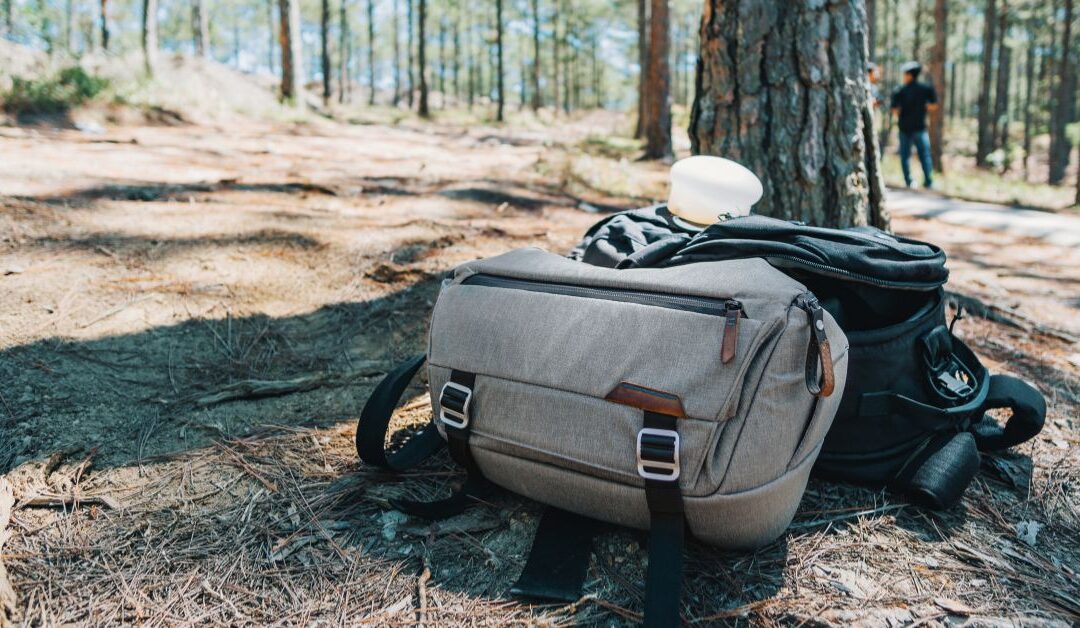Your backpack is more than just a piece of gear—it’s your portable home, carrying everything from water and food to survival essentials. For climbers, mountaineers, and long-distance hikers, choosing the right backpacks & bags determines not only how comfortable your journey will be, but also how safe and efficient you’ll be on the trail.
In this guide, we’ll explore how to pick the perfect backpack for your adventure—covering fit, features, capacity, and how your pack interacts with your other camping equipment, hiking gear, and shelter & sleeping gear.
Why the Right Backpack Matters
A quality backpack evenly distributes weight, keeps you balanced on technical terrain, and protects your gear from weather and wear. A poor choice can lead to back strain, sore shoulders, or gear failures at the worst possible time.
Think of your backpack as the backbone of your adventure—it connects every piece of your setup, from clothing & outerwear to navigation & survival tools.
Step 1: Determine the Right Capacity
Different adventures demand different pack sizes.
Day Hikes (20–35 L)
For short treks or summit pushes, a smaller daypack is ideal. It holds essentials like food, water, first aid, and an extra layer without weighing you down.
Weekend or Overnight Trips (40–60 L)
For 1–3 nights, you’ll need extra space for shelter & sleeping gear, cooking supplies, and additional clothing & outerwear layers.
Extended Expeditions (60 L and up)
For longer climbs or multi-day trips, go bigger. Expedition-sized packs are built to carry bulkier gear, including tents, sleeping bags, ropes, and heavier loads, while maintaining comfort and structure.
Step 2: Focus on Fit and Comfort
Torso Length and Hip Support
Your pack should fit your torso—not just your height. The shoulder straps should sit snugly without pinching, and the hip belt should carry most of the weight.
Shoulder Straps and Padding
Thick, breathable padding helps distribute pressure evenly. Look for adjustable shoulder yokes and load-lifter straps to fine-tune fit.
Ventilation Systems
Sweat buildup on long climbs can be uncomfortable. A ventilated back panel or mesh suspension system helps regulate airflow, keeping you cooler on the move.
Step 3: Look for Smart Design Features
Material Durability
Choose abrasion-resistant fabrics like ripstop nylon or Cordura that withstand contact with rocks and branches. Waterproof coatings or rain covers are essential for protecting your camping equipment and clothing & outerwear inside.
Accessibility and Organization
Multiple compartments make life easier on the trail. Front zippers or side access panels allow quick retrieval of essential items like snacks or maps without unpacking everything.
Attachment Points
For mountaineering, look for external loops for ice axes, helmets, or trekking poles. Hikers can benefit from hydration sleeves, gear loops, and adjustable compression straps.
Step 4: Integrate Your Pack with the Rest of Your Gear
A great backpack doesn’t work in isolation—it complements your full setup.
- Clothing & Outerwear: Keep lightweight layers and rain shells near the top for fast weather adjustments.
- Outdoor Footwear: Make sure your boots or trail shoes fit comfortably with your pack weight; heavier packs require stiffer soles.
- Shelter & Sleeping Gear: Use bottom straps or side pockets to attach sleeping pads and tents securely.
- Navigation & Survival Tools: Keep essentials—compass, map, or GPS device—easily accessible.
For example, adding a compact GPS locator ensures you never lose track of your vehicle or base camp after a long expedition. Browse dependable navigation tools in our shop at ExplorePeakOutdoorGear.com/shop.
Step 5: Pack Like a Pro
- Balance your load: Heavier gear (food, cookware, water) should sit close to your spine.
- Organize smartly: Frequently used items like rain jackets, snacks, and navigation gear should be easy to grab.
- Protect fragile items: Use soft clothing layers to cushion electronics or cooking equipment.
- Maintain regularly: Clean zippers, reapply waterproofing, and inspect stitching after each trip.
- Train with your load: Wear your pack during local hikes before a long journey to test comfort and weight distribution.
Step 6: Match Your Pack to Your Travel Style
- For Climbers & Mountaineers: Go lightweight and weatherproof. Look for streamlined designs that won’t snag on rock or ice.
- For Campers & RV Travelers: Opt for larger, comfort-focused designs with more pockets and storage space.
Choosing the right backpacks & bags can make or break your outdoor adventure. The perfect pack should balance durability, comfort, and versatility—while integrating seamlessly with your camping equipment, hiking gear, navigation & survival tools, and shelter & sleeping gear.
Whether you’re planning a short alpine hike or a full-scale expedition, take the time to test your gear, adjust your setup, and invest in quality that lasts.
Explore our full selection of premium outdoor packs, hydration systems, and hiking accessories at ExplorePeakOutdoorGear.com/shop and gear up for your next mountain adventure.

